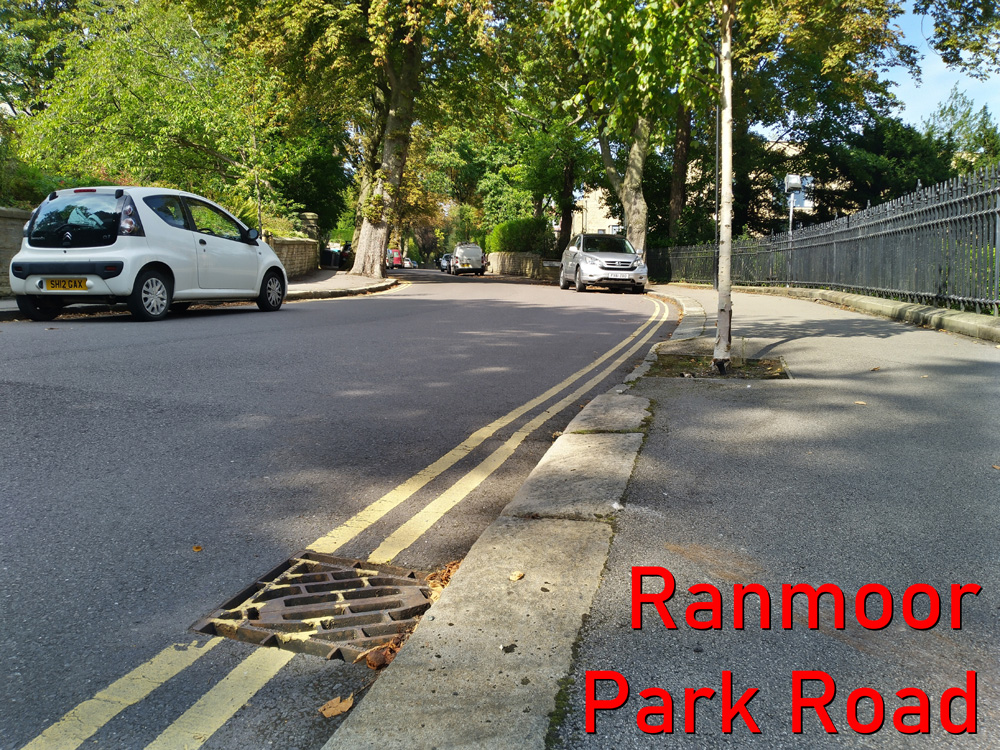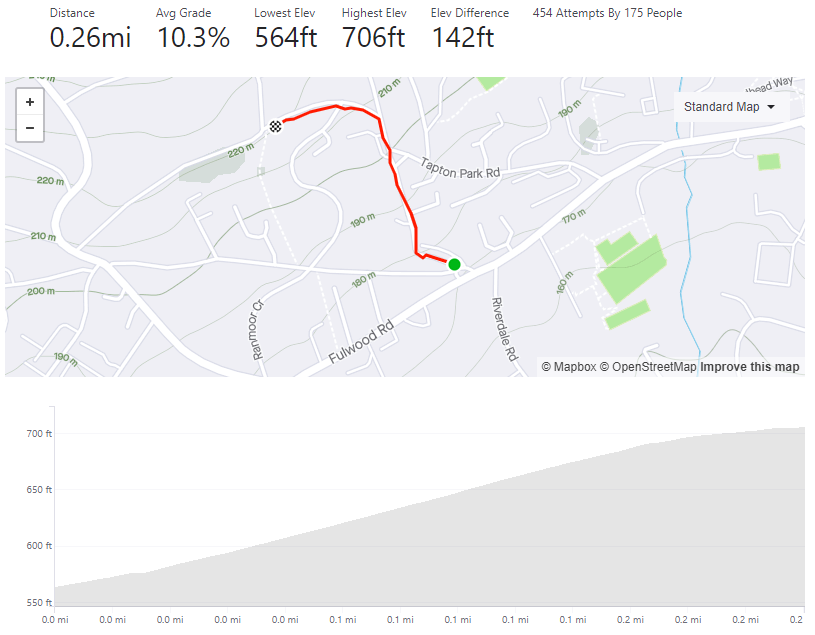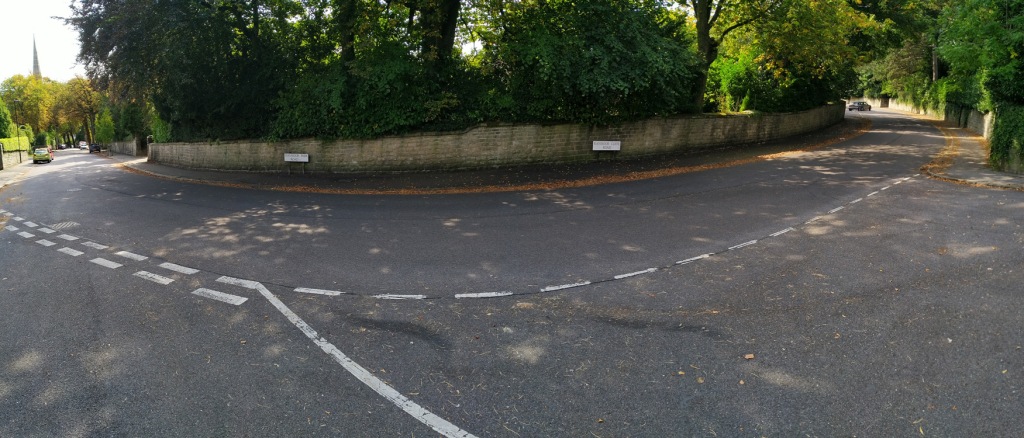
- Cobnar Road
- Length: 0.31 miles
- Avg gradient: 13.5% Peak gradient: 30ish%(!)*
- Difficulty: 4/5
- Likelihood of encountering unpleasant motor-vehicles: 1/5
- Elevation gain: 226ft
- Strava
An utterly deceptive beast.

Cobnar Road is a residential street that begins innocently enough but it is truly lulling you into a false sense of security.
‘What’s going on here? This doesn’t seem too challenging and the gradient is only in single figures,’ you’ll think as you start the climb. Fair enough, Cobnar Road does begin unremarkably enough but what you might not notice straight away is how it gets progressively steeper, the further you progress.
When you pass Bingham Road, you might sense that the hill has sneaked into low double figures but nothing noteworthy. However, another 50 metres or so, at the junction with Wellcar Road and the ‘dead end’ road sign, the gradient suddenly spikes into the teens. It’s at this point that you realise how the start of the climb tricked you.

Looking up, all you can see the rising tarmac and what looks like an impenetrable wall of trees. Dig in here as the worst is yet to come. Luckily the road is fairly wide and quiet, so you’ve got wiggle room and few hazards as you wind your way up the hill. This is where the fun starts.
Keep your momentum and switch on to what looks like a footpath (it’s not labelled as such, so you’re not breaking any rules by cycling up it). The narrow path (featuring a handy handrail) disappears around a blind corner – so you’ll have to hope that you’re not going to meet anyone walking down the opposite direction – and ramps up to a gradient of 17 – 18%. It’s only for 100m or so but, because of the path’s width and probably being slippery with leaves, there’s no room for mistakes. The last time I did it, I very nearly came off the tarmac and into the little ditch next to the path.

I seriously put Cobnar Road on a par with Hagg Hill, which is the bar against which I judge all other hills. So, if you get to the top without stopping, take a moment to get your breath back and congratulate yourself on, not only defeating such a cheeky beast of a climb but probably one of the most challenging hills in Sheffield.
*GPS coverage is a bit wonky under the trees at the top, with both Strava and Veloviewer saying an incline of almost 40%. That seems excessive but I wouldn’t be surprised if it does briefly break 30% at the end.




























